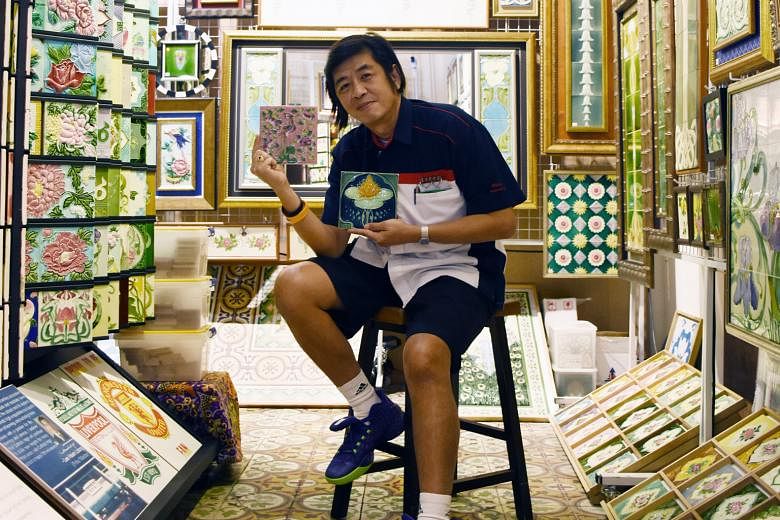The rector's two-storey residence at the Cathedral of the Good Shepherd has about 10 different designs and colour variations of floor tiles dating to about 1910.
"We were amazed that such intact flooring still existed. It is a rare showcase of such tiles from the turn of the century," said Mr Ho Weng Hin, 42, a partner at architectural consultancy Studio Lapis, which restored the tiles as part of the major restoration of the 174-year-old cathedral that was completed last year.
Every tile was made by hand, with the patterns inlaid using a cement mould. The designs are at the transition between the international Art Noveau style - abstract designs that drew inspiration from nature - and Art Deco, which featured bolder shapes and colour.
The rectory's ground floor had to be reconstructed as a huge crack had appeared down the middle of the floor, said Mr Ho.
Instead of hacking the floor, each tile - about 2,000 in all - was carefully numbered and extracted using a mallet and chisel, before it was replaced. The tiles were cleaned and repaired where necessary, and replicas created of the small number that could not be saved.
Ms Khoo Ee Hoon, 51, an independent researcher who travels around Singapore hunting for decorative tiles to admire and study, said many such tiles remain in shophouses and other buildings in Neil Road, Emerald Hill, Little India and Geylang, although most are not as elaborate as the ones in the rectory.
There are two kinds of tiles - the cement types found mostly on floors and the tin-glazed kind used mostly on walls.
Decorative tiles first came to Singapore in the 1890s. Assistant Professor Yeo Kang Shua, an architectural historian at the Singapore University of Technology and Design, said many of them were initially from the tile-manufacturing town of Stoke-on-Trent in Staffordshire in Britain, but the 1920s saw the appearance of Japanese-made tiles.
Singapore had its own Tampenis Cement Tile Works, which opened around 1906 and closed in 1957.
Over at the Temple of Heavenly Jade Emperor in Telok Ayer Street, tile enthusiast Victor Lim, 56, has given new life to ornate tilework from the early 20th century.
"They (the tiles) have historical value as they illustrate the tastes of the temple's original Straits Chinese owners," said the temple's abbot, Master Lee Zhiwang.


